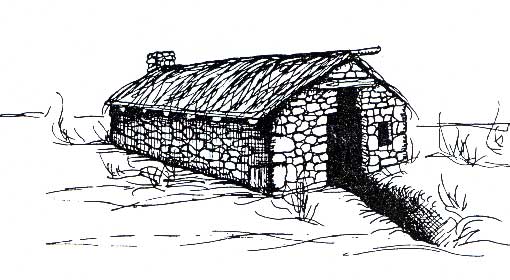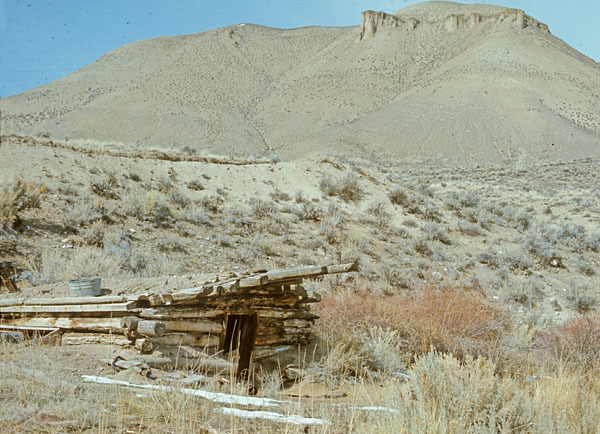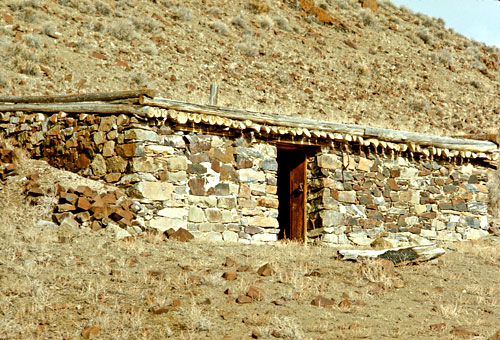 |
||
|
Dugouts were usually the first shelter constructed by our Morgan ancestors when they pioneered a new area, such as the Neeleyville area in Idaho.
The dugout in the picture above, photographed in the Challis, Idaho area in 1971, is typical of those our Morgan ancestors constructed when they homesteaded land. A hillside or gullybank was selected where digging back into the hillside would provide rear and partial side walls. The side walls were then built up, either with poles or soil, or both. A roof of poles was laid on top and then covered with soil. Grass was planted on the roof. This roof was more or less waterproof but usually leaked in harder rains, dripping water and mud onto the inhabitants inside.
|
|||
|
The dugout above was not a Morgan Family home but Morgan Families, when pioneering new areas, often lived temporarily in dugouts they built themselves. The dugout above is an old Mormon hillside dugout and illustrates how some dugouts were built by digging back into a hill, a technique described in a Morgan family life sketch. Sometimes ledges were left along the side to be used as beds. The front might be constructed of stone or sod. Sometimes heavy blankets were used as doors and waxed paper for windows. Roofs were usually made of poles and sod.  The dugout in the illustration above is a little higher above ground than most, otherwise it is typical of Mormon dugouts built on level ground. Thomas Morgan's first residence at Leamington, Utah, was a dugout built on level ground, probably similar to the one above. Later he built a log cabin on top of it and used the dugout as a basement or cellar.
When stones were available they were often used to build the front and sides of the dugout. This well preserved dugout was photographed in Idaho in 1971. |
|||
|
Living in dugouts, however temporary, was not pleasant. People had to share these hovels with vermin of all kinds, the roofs
leaked, sanitation was a problem, and death rates were high, especially among children. However, in cold winter weather dugouts
were a welcome shelter, safer and preferable to sleeping in the wagon boxes outside.
|
|||


